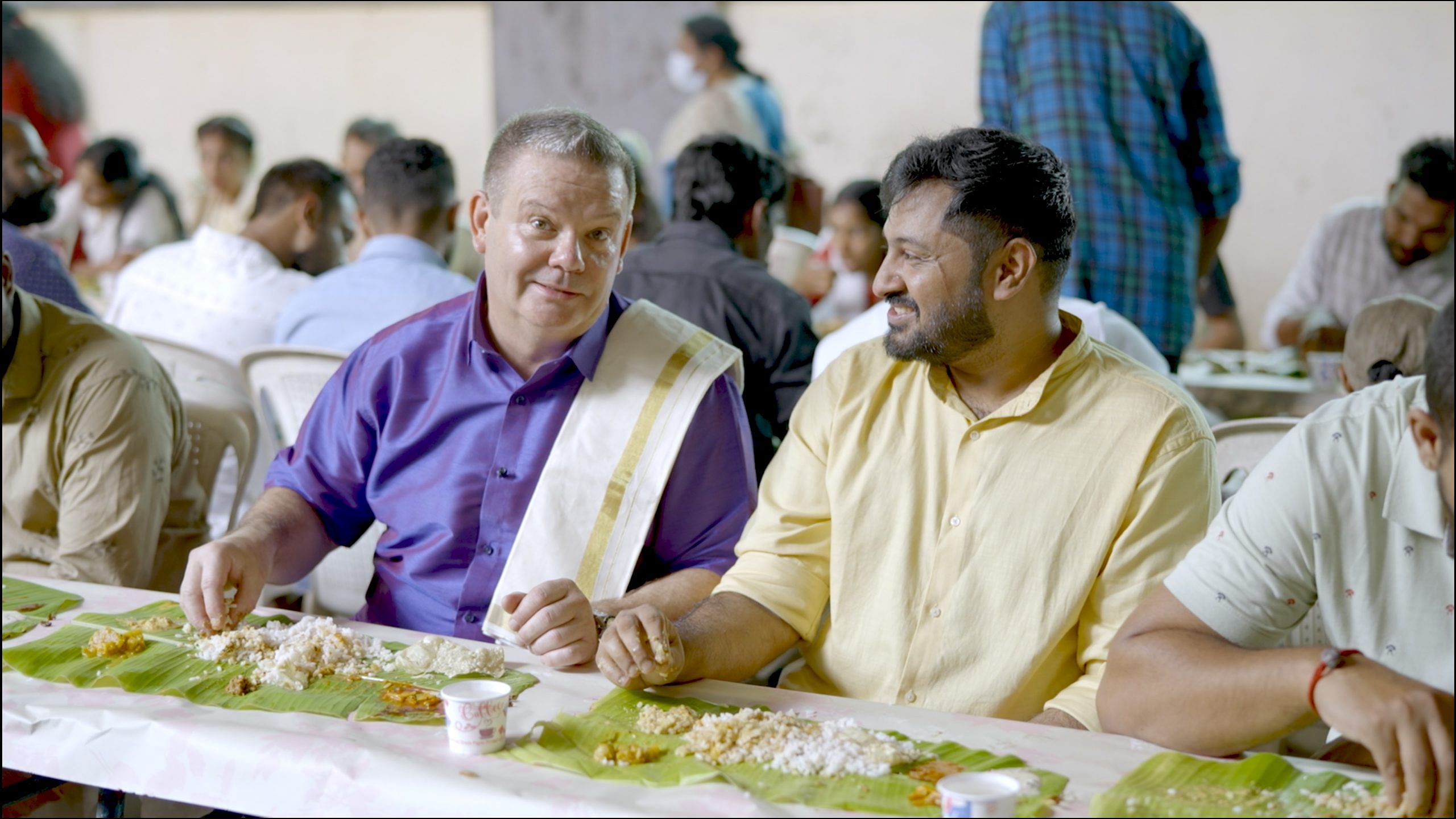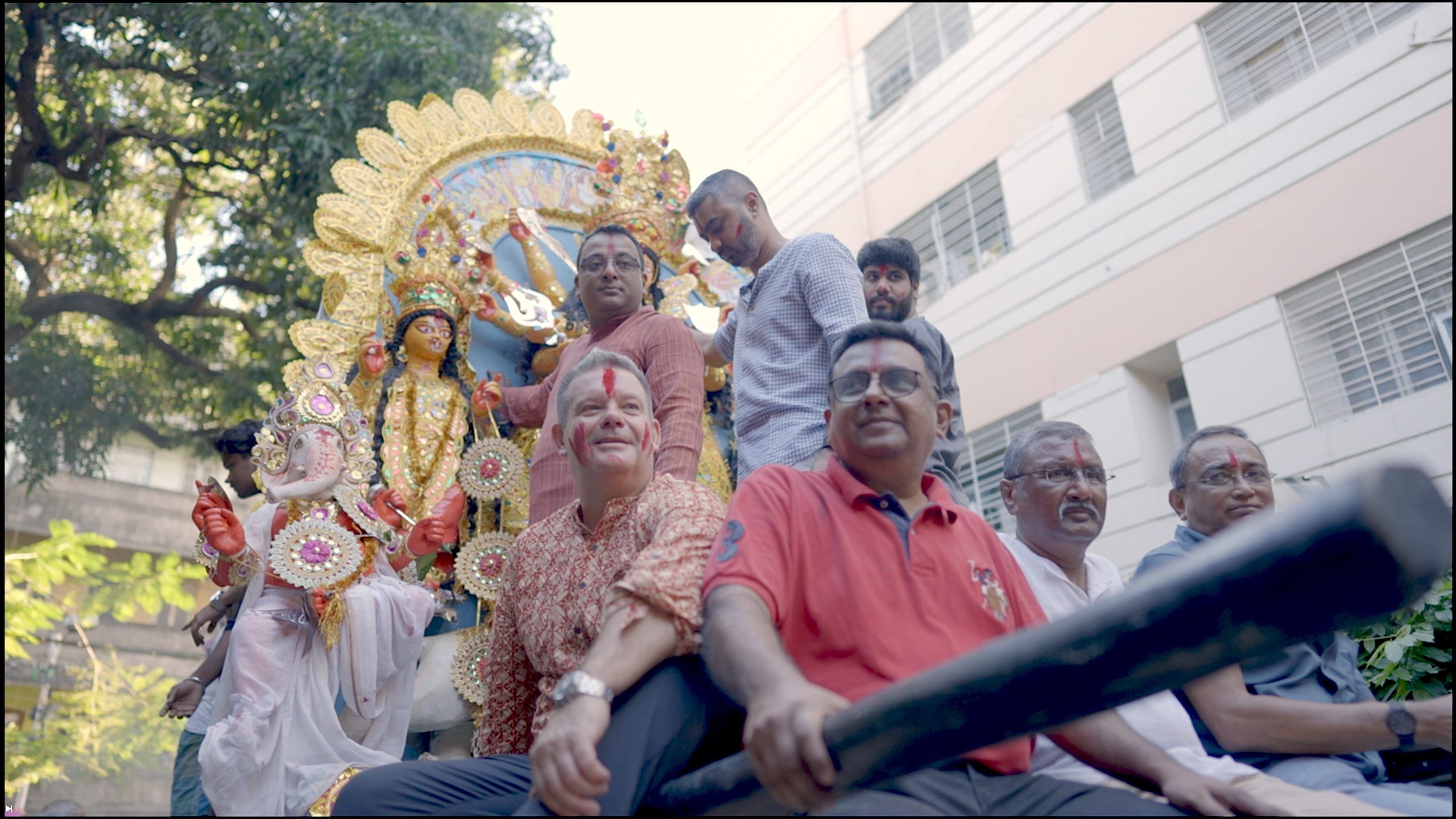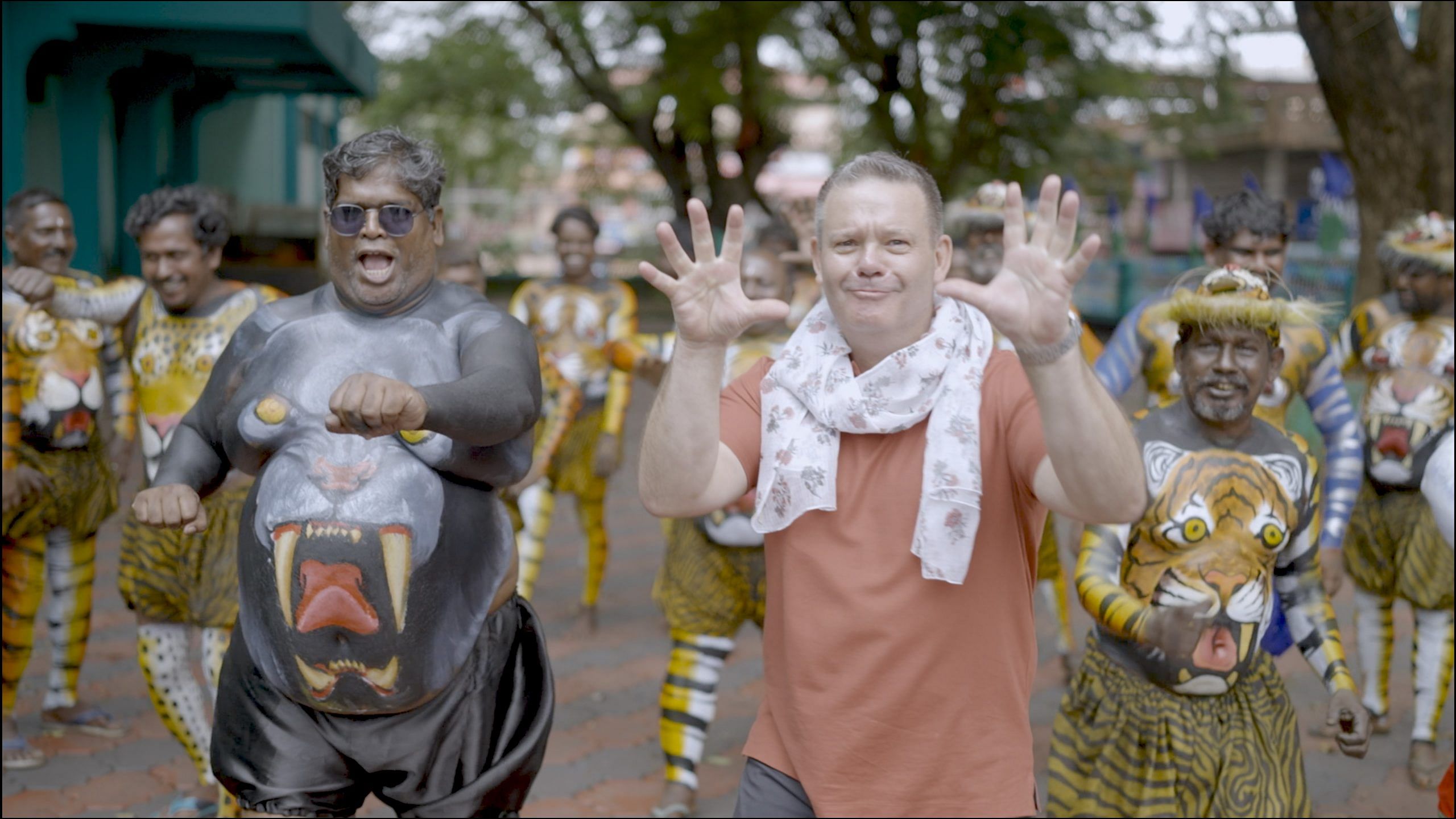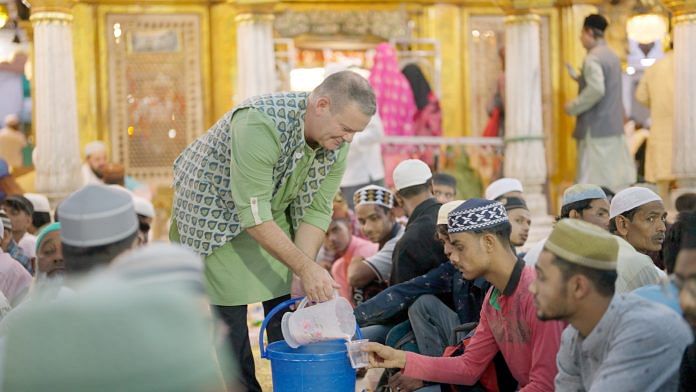Where there’s Gary Mehigan, there’s food, and where there’s food, there’s devotion, desire, and the occasional conflict. The Australian chef—most recognisable as one of the three original judges of Masterchef Australia—is back in India, but this time to explore the country’s culture, community, and charity.
From moments of reflection amid the frenzied crowds in Kolkata during Durga Puja to discovering how Haleem is made for Eid in Hyderabad, Mehigan has travelled the length and breadth of the country with National Geographic for his new show India’s Mega Festivals.
The first season of the show follows Mehigan immersing himself in the festivals of Onam, Eid, Durga Puja, Hornbill, Holi, and Ganesh Chaturthi. He eats beef in Kerala, goat intestines in Madurai, and kebabs in Delhi.
The chef’s Instagram handle offers a colourful behind-the-scenes glimpse into his adventures. In the comments section of one video where he mentions eating beef in Kerala, a surprised user expressed shock at the variety of meat available in India.
Mehigan admits that navigating these misconceptions about Indian food can be a “clumsy” endeavour. “I don’t correct it; I let people navigate through that themselves. You see that people will often jump in and comment like they did [in replies on the Instagram post],” he tells ThePrint in a phone conversation.
India’s food is all about perspective and context. “I try not to argue about it too much. But ultimately, I want the idea of sharing food to be filled with joy and understanding,” he says.

While this is not without conflict, Mehigan explains that this doesn’t need to turn into a point of contention. In Nagaland, he was presented with something he “didn’t want to eat”. The interaction that followed is a template for respecting food choices in a country wracked by heated debates on eating habits.
He refused the dish offered to him, but the Naga man insisted that Mehigan eat it, saying it was culturally important. The chef responded that it’s culturally important to him that he has “the strength to say no”.
Mehigan said that his host was happy with the response. “I can respect it and he can respect my perspective, and then we move on and everything’s good,” he says.
Also read: Momos to gin & tonic—a new Indian ‘food bible’ offers trivia, history. But no politics
Exploring India through food
Food and devotion are an intrinsic part of a journey that the chef is drawn to because it is personal and pointed. And it wasn’t just during the religious rituals that Mehigan felt swept away. His experience of having breakfast at 6 am in Vrindavan during Holi demonstrates this.
“There would be like 80 people huddled around one particular shop. And then you just hold your little leaf bowl out, and they put a Kachori and Aloo Jhol on the top. You eat it, hold it out again, and another one. It’s like shooters,” says Mehigan. And this memory will inform his experience the next time he eats the dish, understanding its role in everyday life. “You don’t get that if you eat it at a restaurant.”
Mehigan points to the ebb and flow of Indian festivals as his biggest takeaway from the trip.
“I have never seen crowds like at Durga Puja. Everybody that I met on the plane was on their way back to the city to celebrate. And on the opposite end is the Hornbill Festival,” he says.

Even his Indian friends were curious about his time in Nagaland for the Hornbill Festival. Organised every year from 1-10 December, the festival witnesses all the tribes of the state come together to celebrate their heritage. The main draw is the music festival, but crafts, sports, and flower shows also pull crowds.
Food is an important part of Mehigan’s exploration of India. The cuisines he got to try out at the Hornbill Festival were a surprise in that they were the antithesis of his knowledge of Indian cuisine.
“There are no spices, none of the turmeric and coriander you would expect from Indian food. It’s foraged and fermented. And there are insects,” he says.
Immediately, he follows it up by saying that this is very normal “in the context of Naga life and Naga history”.
Mehigan is intentional about how he speaks about food. There’s no othering, just unbridled curiosity.
Also read: ‘Ghar ka khana’ to delivery apps — Indian food is changing, but you can’t blame women
Finding a home in India
Trained in classical French cuisine, Mehigan has a sharp eye for technique. He recalls a man throwing porotta dough in Madurai, Tamil Nadu. “In 20 seconds, he throws this perfect porotta that was like tissue paper, and then chucks it on the table and makes another 300,” he says in complete awe.
He has tried it at home but it’s never been the same. “I’ve not made 50,000 porottas. You just have to go to Madurai and eat one,” he adds.
And that’s his goal with the show — to cover food and culture in a way that’s “authentic and lip-smacking”. Premiered on 6 September, India’s Mega Festivals airs on Wednesday at 8 pm on National Geographic in India.
As the host, Mehigan wants people who have never been to Nagaland or Kerala to say that what they’re seeing is delicious. “I want them to wonder if they can find that or if they can buy it or if they can go to these places.”
His exploration of food is steeped in tradition and contrast. He says that India has given him so many friendships that when he looks at his phone, “there are more Abhisheks than there are Andrews”.
Down in Kerala, Mehigan’s Onam started with the traditional folk art pulikali (tiger dance). “Never have I felt slim among a group of men,” he laughs, adding that he felt like Arnold Schwarzenegger among all the full bellies.

He observed the sadya being made at the Thrikkakara temple in Kochi and even served those who came for the meal. His new discovery was Kerala’s red matta rice — “who cares about basmati, Kerala rice is the best rice on the planet.”
Mehigan was at home in Kolkata’s crowds and thoroughly enjoyed pandal hopping. But he met some American tourists there who were “shell-shocked”.
He recalls how they complained about busy streets and “rude” people pushing and shoving them.
“All of a sudden I went on a defence of India. I said, they’re not rude, it’s just a necessity. There are another 100,000 people behind them. If you turn around and say, excuse me, they will apologise to you. You just have to embrace that,” he said.



